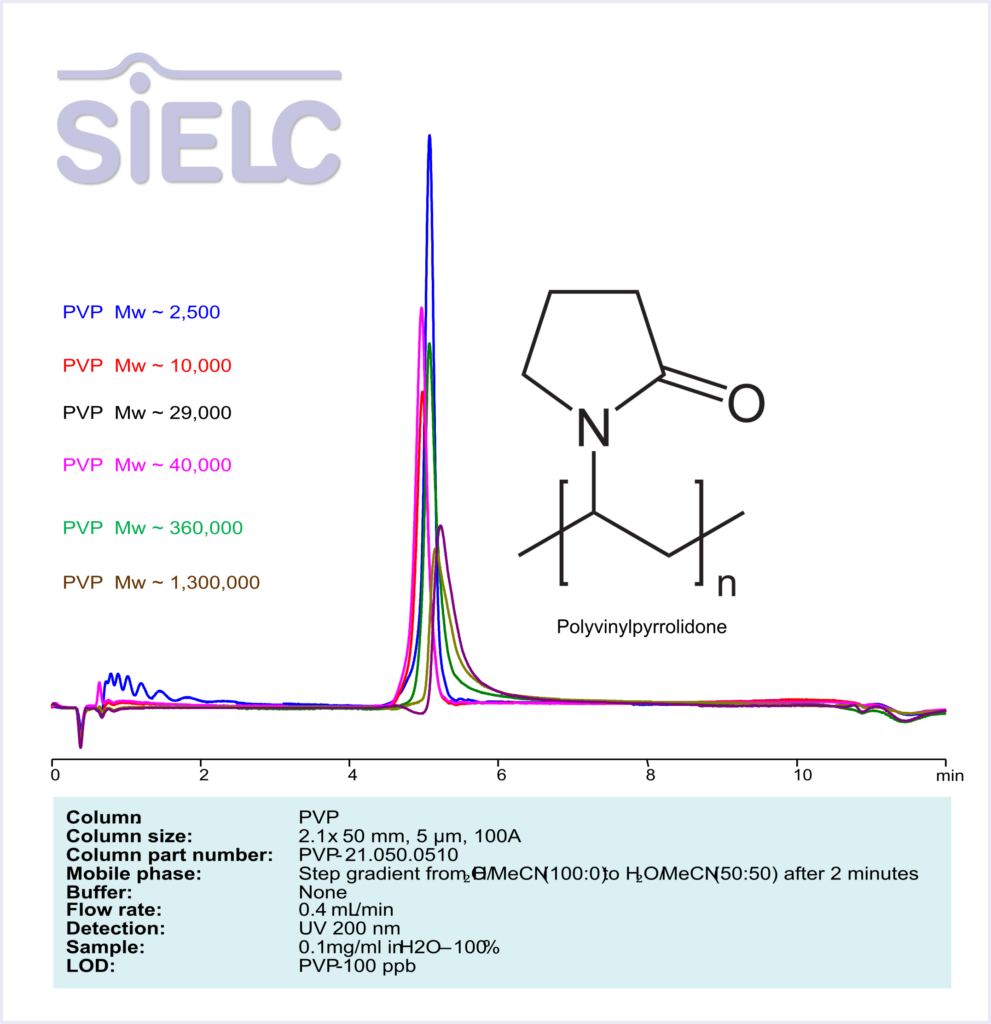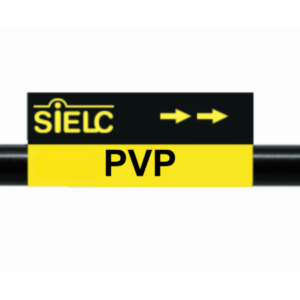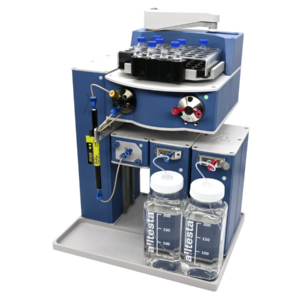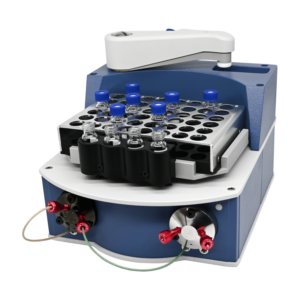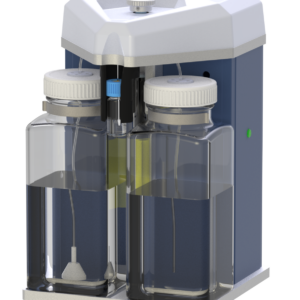HPLC Method for PVP on PVP by SIELC Technologies
High Performance Liquid Chromatography (HPLC) Method for Analysis of PVP
Polyvinylpyrrolidone (PVP)
Polyvinylpyrrolidone (PVP) is a versatile synthetic polymer widely used in life sciences and biochemical research. As a water-soluble compound, it performs multiple critical functions, including:
- Acting as a stabilizing agent
- Serving as an emulsifier and suspending agent
- Enhancing solubility of various compounds
- Functioning as a protective colloid
- Operating as a complexing agent
Its role as a protective colloid is especially important for stabilizing proteins, enzymes, and other sensitive biological molecules. This makes PVP particularly well-suited for forming stable complexes with iodine in pharmaceutical and medical formulations.
[compound] can be retained and analyzed using the PVP column. The analysis utilizes an step gradient method with a simple mobile phase consisting of water and acetonitrile (MeCN). Detection is performed using UV at 200 nm. The signal from the blank injection was subtracted from all sample chromatograms to correct for background noise and baseline drift.
| Column | PVP, 2.1 x 50 mm, 5 µm, 100 A, dual ended |
| Mobile Phase | Step gradient from H2O/MeCN (100:0) to H2O/MeCN (50:50) after 2 minutes |
| Buffer | None |
| Flow Rate | 0.4 mL/min |
| Detection | UV at 200 nm |
| LOD | PVP – 100 ppb |
| Class of Compounds | Polymer |
| Analyzing Compounds | PVP |
Application Column
PVP
Column Diameter: 2.1 mm
Column Length: 50 mm
Particle Size: 5 µm
Pore Size: 100 A
Column options: dual ended

